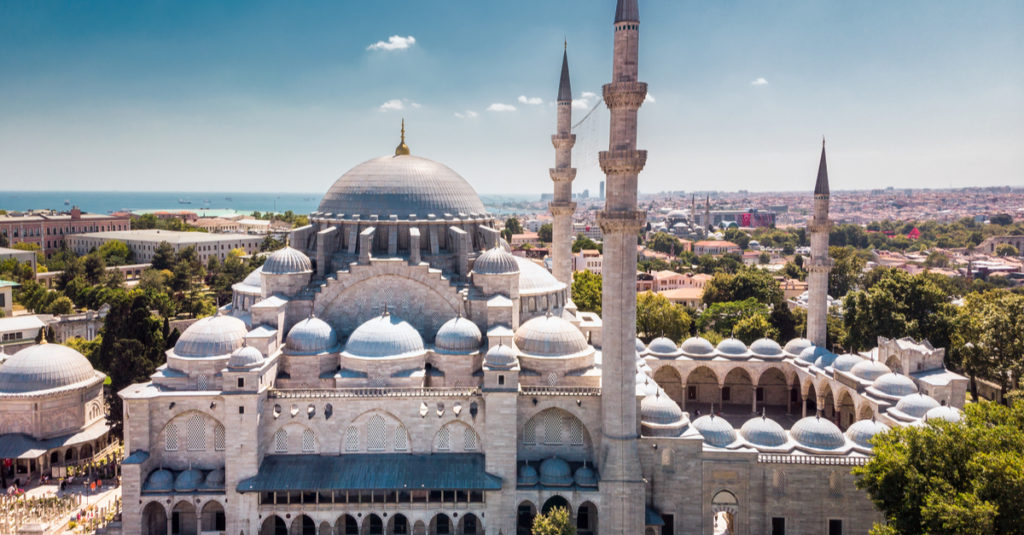Mimar Sinan, arguably the greatest and most influential architect of all time, died 435 years ago in July, 1588.
Born in Anatolia in 1489, he lived during the zenith of the Ottoman Empire and during his lifetime the iconic skyline of Istanbul was changed forever.
Sinan was the son of Greek or Armenian Christian parents and initially entered his father’s trade as a stone mason and carpenter. But in 1512 he was drafted into the Janissary corps and converted to Islam, beginning a lifelong service to the Ottoman royal house and to Sultan Süleyman the Magnificent in particular.
Following a period of schooling and rigorous training Sinan became a construction officer in the Ottoman army, eventually rising to chief of the artillery. During his time in the military he travelled widely throughout the empire, as far as Baghdad, Damascus, Persia and Egypt.
As the Ottoman armies marched through Europe, Africa and Persia, Sinan went with them, organising engineering corps for the military, as well as building mosques and other civil buildings in newly Ottoman cities.
“I saw the monuments, the great ancient remains. From every ruin I learned, from every building I absorbed something,” he said.
In 1538, his talents could no longer be ignored and he was given a position as the head architect of the Sultan’s government in Istanbul.
Subscribe to our newsletter and stay updated on the latest news and updates from around the Muslim world!
Hagia Sophia
Sinan first revealed his talents as an architect in the 1530s by designing and building military bridges and fortifications.
The number of projects he undertook was massive – 79 mosques, 34 palaces, 33 public baths, 19 tombs, 55 schools, 16 poorhouses, 7 madrasahs and 12 caravansaries, in addition to granaries, fountains, aqueducts, and hospitals.
Sinan’s style was influenced by the timeless gem of Istanbul’s architecture – the former Christian church the Hagia Sophia. Ottoman architects used the Hagia Sophia’s giant dome as a template for how to design mosques and Ottoman mosques were thus based on the premise of having one giant central dome over the main prayer hall that was held up by numerous semi-domes on its sides.

But despite numerous attempts to top the Hagia Sophia in size and beauty, no architect was able to accomplish such a feat. So Mimar Sinan made it his goal to build a monument to Islam that was more magnificent than the epic Hagia Sophia.
As he began his career, he built smaller mosques across the empire. He built the Khusruwiyah Mosque in Aleppo Syria in 1547, and he renovated the mosque of Imam Abu Hanifa in Baghdad as well as the mosque of Jalal al-Din al-Rumi in Konya.
These projects all gave Sinan a good background in architecture and engineering, and they also provided him with the skills he would need once he started building larger monuments to the glory of Islam.
Masterpieces
Two of his most famous works were the Süleymaniye Mosque in Istanbul and the Selimiye Mosque in Edirne.
The Süleymaniye Mosque was constructed in the years 1550–57 and is considered by many scholars to be his finest work.
It was based on the design of the Hagia Sophia and has a massive central dome that is pierced by 32 openings, thus giving the dome the effect of lightness while also copiously illuminating the mosque’s interior. It is one of the largest mosques ever built in the Ottoman Empire.

Besides the place of worship, it contains a vast social complex comprising four madrasahs, a large hospital and medical school, a kitchen-refectory, and baths, shops, and stables.
Dominating the Bosporus and the Golden Horn, the silhouette of the Suleymaniye, with its slender minarets and lofty dome, is one of the defining features of Istanbul.
But Sinan himself considered the Selimiye Mosque in Edirne, built in the years 1569–75, to be his masterwork. This mosque is the culmination of his centralized-domed plans, the great central dome rising on eight massive piers in between which are impressive recessed arcades. The dome is framed by the four loftiest minarets in Turkey.
Enduring legacy
Sinan died in 1588, aged 98, and was buried in a modest tomb which he designed for himself at the rear of his garden near the Suleymaniye Mosque in Istanbul
During his life, he built some of the greatest monuments the Ottoman Empire has even seen, but the impact he had on the Muslim world was not just limited to the mammoth mosques he built.

He built over 90 large mosques throughout the empire, 50 smaller mosques, 57 colleges, 8 bridges, and numerous other public buildings throughout the Ottoman realm.
His apprentices would go on to build other major landmarks throughout the world, including the Sultanahmet Mosque (Blue Mosque) in Istanbul and the Taj Mahal in Agra, India.
He is considered the greatest Muslim architect of all time, and his works are some of the greatest symbols of Islam today, 433 years after his death.










![24 Hour Road Trip Through Free Syria [Short Film]](https://5pillarsuk.com/wp-content/uploads/2025/02/IMG_5907-218x150.jpg)











